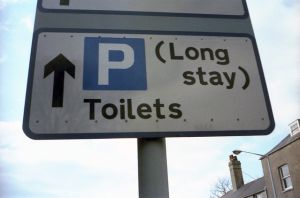Various Business Types Where Customer Engagement Gives A Negative Return On Investment
by Robert Bacal
 In Parts One and Two of this series, we talked about the importance of defining what we want customers to interact or engage with, AND to make sure the link between that interaction and business goals/profits are solid. Otherwise one can end up with a negative return (less sales).
In Parts One and Two of this series, we talked about the importance of defining what we want customers to interact or engage with, AND to make sure the link between that interaction and business goals/profits are solid. Otherwise one can end up with a negative return (less sales).
In this part of the series, let’s look quickly at a variety of business types and niches where customer engagement is either useless, or worse, actually costs companies.
Hotels? Good Example For Answering The Question: What Do We Want Customers To Engage With
Hotels are interesting because what’s important is WHAT guest are engaging in. For example, if guests are staying In their rooms, not ordering room service, and playing video games in-room, then that’s probably NOT a good thing.
If a hotel offers a swimming pool, and guests love it, and spend significant amounts of time “engaging’ in activities at the pool, that’s a GOOD form of engagement, even if it doesn’t result in demonstrable profits, because hotels NEED their guests to have a good time.
HOWEVER, if a hotel offers a swimming pool as a means of enhancing the experience, BUT doesn’t maintain the pool properly, so few want to spend time there, that’s a BIG problem.
MOST Industries Will Not Benefit From Increased Customer Engagement
The more you think about it, the more you’ll come to the realization that customer engagement is often negative.
Many businesses offer convenience and speed as added value proposition. People go to these businesses to purchase something they want or need, and want to do so as quickly as possible. For example:
- Convenience Stores
- Gas Stations
- Fast Food Outlets
- Most Retail Establishments
Customers of these businesses, by and large, have little desire to be engaged, whether it’s via chatting with staff, or playing some sort of game, and they are not likely to spend more money, the longer they are in a store or business. They want to get in, and get out, and attempts to get them to “engage” are likely to annoy rather than please.
Certain “Focused” Service And Professional Services
It’s hard to imagine what customer engagement means with respect to a plumber, apart for customer and plumber chatting, but it is a good example of why it might be highly annoying for a customer to be gabbed at by one when the plumber is supposed to be fixing a pipe, AND charges by the hour.
The same applies to various trades, where customers are contracting for THE RESULT, and not the experience of interacting with the trades person. Of course, one could suggest that the more engagement and conversation, the longer the job takes, so the trades person actually benefits from stringing out the repair, but that’s really an ethical issue.
One might want to engage visitors when the visit a plumbing store, as part of a sales process, or upselling process, since customers who are comfortable with how they have been treated are more likely to contact the store when and if they have a problem. So, again, we see that “it depends”.
Summing Up On The Negatives Of Increased Customer Engagement
- If increased customer engagement does not result in increased sales, what’s the point?
- Increased customer engagement with the WRONG things, can actually distract them from the buying process, so while they might like to visit the establishment for entertainment, that doesn’t mean sales.
- Customer engagement works differently in different business types. For example, casinos benefit hugely the more customer engage in, and absorbed in gabbing. Restaurants however, because of lower customer turnover in services may make a lot LESS money, because engaged customers stay longer.
- Just because you make a customer visit more “fun”, let’s say, it does not mean you will get better business results. It has to be the right kind of fun that encourages spending, and not fun for fun’s sake.
Next: Guidelines For Effective Customer Engagement Strategies And What To Do

